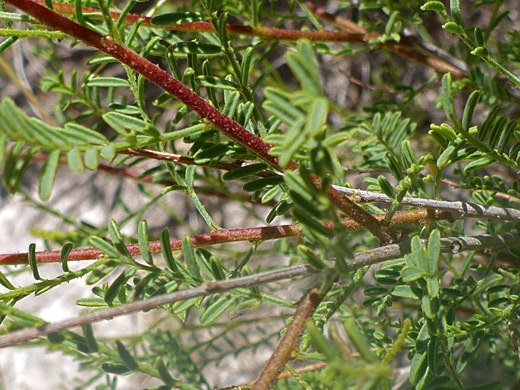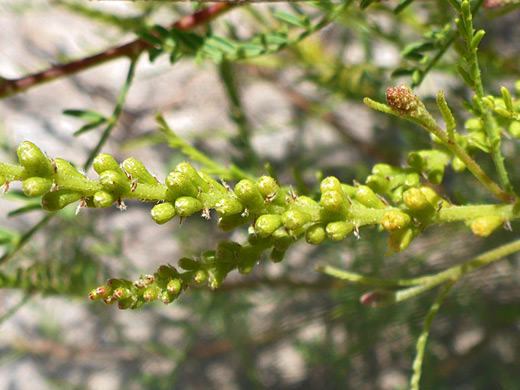Common name:
Common dunebroom
Family:
Scientific name:
Parryella filifolia
Main flower color:
Range:
The Four Corners area - the southern half of the Colorado Plateau
Height:
Up to 4 feet
Habitat:
Sand dunes, gravelly patches; generally open, dry places; between 4,000 and 7,000 feet
Leaves:
Alternate, up to 5 inches long, pinnately divided into up to 40 small, linear leaflets, dotted with tiny glands
Season:
May to September
Flowers of parryella filifolia, the only member of its genus, are atypical for the fabaceae family, since the flowers lack petals, consisting only of a narrow, cone-shaped, yellowish-green calyx, with five tiny lobes at the tip, from which project ten stamens - pale yellow filaments and darker yellow anthers, attached in their middle. Calyces have ten faint ribs at their base. The ascending flowers are borne in a narrow, unbranched cluster, up to 5 inches long.
Leaves are pinnately divided into up to 20 pairs of tiny leaflets, around half an inch long and less than a tenth of an inch across, their margins slightly upcurved. Leaves, stems and calyces have a sparse covering of short, strigose hairs. The short, slightly elongated pods contain one seed; they are hairless, greenish-yellow, flecked with darker glands.
Leaves are pinnately divided into up to 20 pairs of tiny leaflets, around half an inch long and less than a tenth of an inch across, their margins slightly upcurved. Leaves, stems and calyces have a sparse covering of short, strigose hairs. The short, slightly elongated pods contain one seed; they are hairless, greenish-yellow, flecked with darker glands.
All Contents © Copyright The American Southwest | Comments and Questions | Contribute | Site Map



